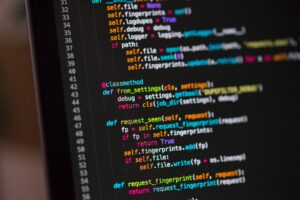In this time of much data, many teams use AI and smart data checks to find new info and make choices based on data. As the need for these clever data checks grows, Python has come up to be a strong code tool. It helps people make big and strong data paths. This write-up will show you how to use Python for making AI data paths and make the most of your numbers.
Now, AI powered analytics are essential for gaining a competitive edge. Python has a lot of parts and sets to help you do this. It's great for making a full data check path, from taking in data to putting models to work and keeping an eye on them.
Understanding Analytics Pipelines and Their Components
A data flow line is a set path that makes working with lots of data simple, from first taking in raw stuff to making plans you can use. It's made of a few main steps, like taking in data, cleaning it up, building models, checking them, and putting them to use. By breaking down the analysis into distinct components, analytics pipelines promote reproducibility, scalability, and maintainability – key benefits of Python development that contribute to efficient and maintainable code.
Data Ingestion and Preprocessing with Python
To start making an AI-powered analytics pipelines, you take in info from many places, like files, data stores, or web services. The big set of tools in Python, with helpers like Pandas and NumPy, are strong for taking in, changing, and fixing up data.
After you get the data ingested, you need to make it ready. You fill in blanks, take out weird points, and make new data parts. These big tasks make sure the info is neat, the same all over, and set for making models.
Exploratory Data Analysis and Visualization
Before you start making a model, it's essential to gain a deep understanding of your data through exploratory data analysis (EDA). Python's Pandas tool helps you work with data well, and tools like Matplotlib, Seaborn, and Plotly let you make good pictures of it.
EDA helps you see shapes, moves, and big things in your data. It tells you which model ways to use and how to make your data better for those ways.
Building and Evaluating Machine Learning Models
Python has many tools for machine learning, like Scikit-learn, TensorFlow, and Keras. These help coders make and teach many types of models, from old machine learning ways to new deep learning designs.
When models are taught, it's key to check how good they are. We do this with right ways to measure and methods like cross-testing and test groups. This makes sure the models are right on point, can be trusted, and work well on new data that they have not seen before.
Automating and Optimizing Analytics Pipelines
As the hard bits in data flow setup get big, making it run by itself and making it better are key for fast work and big growth. Python's simple code tool, Scikit-learn, has ways to line up and let the whole model-making path run on its own, from fixing data to checking the model.
Ways to set best values and make the model better can help tweak how well it works. Tools like Dask and PySpark let many tasks run at once and let many computers work together. This is good for big data and very big work that needs a lot of thinking power.
Deploying AI-Powered Analytics Models
After models learn and are checked, the new phase is to set them up for use in the real world. Python has many tools for boxing, wrapping, and giving out models, like Docker for boxing and web tools like Flask and Django for putting models to work.
By showing models via APIs, they can mix well into apps and work systems, making live guesses and choices.
Best Practices and Ethical Considerations
Making smart data-check paths needs more than just writing code. One must stick to top rules and think about what's right and wrong. Python's setup has stuff like Git to keep track of changes and ways to handle work settings so work can be done the same way again and done with others.
Also, it's key to look at possible slants and be fair in smart data checks. Making sure people can get and make sense of machine learning models matters a lot, mainly when big choices are on the line.
Conclusion
Building AI-powered analytics pipelines with Python is like a trip with many parts: taking in data, making it ready, looking into it, making a model, making things work by themselves, putting it out there, and thinking about what is right or wrong.
As AI-powered data gets more into how we do things and makes new things happen, it's key to use the right way, look at what is right and wrong, and keep up with new things and steps forward. Using Python for making AI-powered analytics pipelines lets groups get ahead and make smart choices based on data that help them grow and do well.
https://images.unsplash.com/photo-1515879218367-8466d910aaa4?q=80&w=2669&auto=format&fit=crop&ixlib=rb-4.0.3&ixid=M3wxMjA3fDB8MHxwaG90by1wYWdlfHx8fGVufDB8fHx8fA%3D%3D

